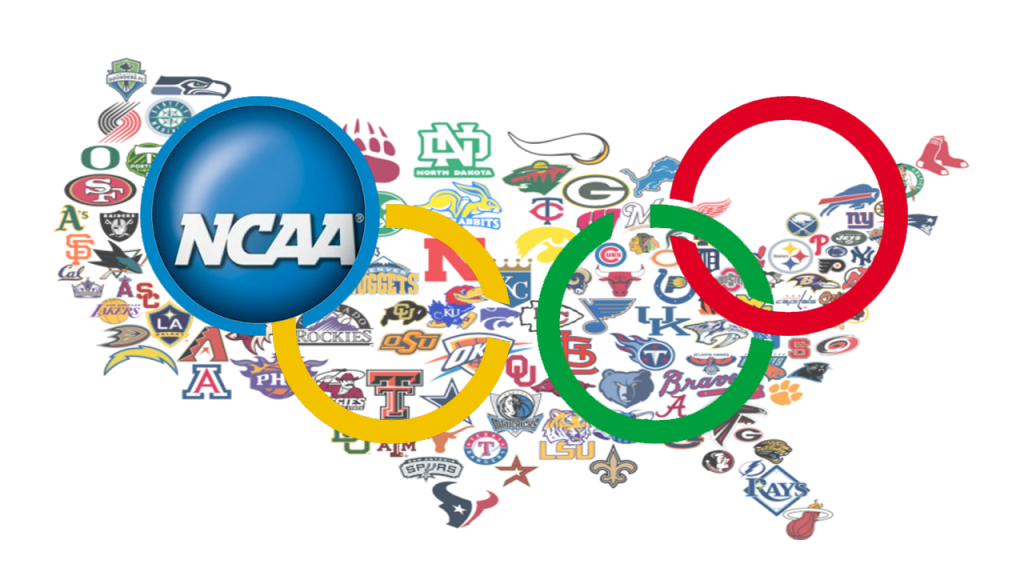Good News on the Bad News Front For College Swimming

Commentary by George Block
SAN ANTONIO, Texas, May 27. THE “Big 5” college football conferences are inching closer to independence from the NCAA. Meanwhile, the concept of a players’ union for revenue sports inches closer to court. With these two developments in mind, the business model of college sports, especially Division I universities that support Olympic sports, becomes critical to the survival of top-level college swimming. And top-level college swimming is the unique American advantage in international swimming.
Splitting the “Big 5” from the “Next 5” conferences creates a haves and have nots inside of what was always a homogenous Division I. The “have nots” will either suffer from an even greater loss of revenue (i.e., TV revenue) or the aspiration to move to the “haves” by cutting their way to prosperity. Both scenarios would significantly reduce the number of Division I swimming opportunities.
The potential for a player’s union could be even more damaging. The “Big 5” could probably afford to pay their players something, but this would put both the “Next 5” and the Olympic sports in even greater jeopardy. College athletic departments aren’t the federal government. They can’t print money. Money to pay players or the budget to play at the top level has to come from somewhere and, in the past, that somewhere has been Olympic sports, especially men’s Olympic sports.
Suddenly, there was some good news on the bad news front. Troy Vincent, former All-Pro player and now the NFL’s executive vice president of football operations, said that the NFL needs a developmental league. Although he didn’t expand much on his idea, it was immediately different from the alphabet soup of “other” pro football leagues (PSFL, UFL, XFL, Arena League) because this D-league would have the brand and support of the NFL.
It could easily operate like baseball’s minor leagues or the NBAD League, with play occurring in the same season as the major league, allowing players to move up and down during the season, depending on both the needs of the mother club and the individual player’s development. Very interesting, you say, but what does this have to do with swimming?
Unionizing the players can only occur because there is no professional route available for players directly after high school. If there was a minor league (like baseball), those players who wanted to move directly to the pros could do so. Those players who wanted to get an education and then take a shot at professional sports could do that.
Burl Yarbrough, the general manager of the San Antonio Missions, the AA affiliate of the San Diego Padres, explained baseball’s amateur draft and how it interfaces with college baseball. “A high school player can be drafted once he turns 18. At that point, he can turn pro or go on to college. If the player goes to a two-year college, he can be drafted again once he turns 19, or again after he completes the two-year college and turns 20.
“If the player goes to a four-year college, that player is not draft eligible for three years. He can be drafted again after his junior year, when he turns 21, then again after he graduates. The signing window is very short, so the player has to know if he wants to go to school or sign with the pros. Once the window closes, it stays shut for a year and the player remains an amateur until the following year’s draft.”
I asked Burl why baseball’s minor league is so much more successful that the NBDL or the various attempts at minor leagues in football. “Well, for one thing, we have had a hundred-plus years head start. The second reason is that the major league clubs own the contracts on most of the players, but the biggest is that baseball is really a hard game.
“Most people don’t realize that, less than 2 percent of the players drafted can go right to the major leagues. That’s not true for football or basketball. In basketball lots of kids go from high school to the NBA. Probably half the kids drafted go right to the NBA. Football is more like baseball in that few, if any, high school kids would be pro-ready, but in baseball, even college kids need some time in the minor leagues. I guess the bottom line is that baseball minor leagues succeed because of necessity.”
Summary: If football and basketball adopted the baseball model and kids could sign at almost any time, with no impact on college eligibility if they don’t, the issue of paying college athletes would be solved and more money would be left for Olympic sports such as swimming. There would be a clear line between professional leagues and student-athletes.
Ironically, the NFL’s success in developing a minor league could be critical to America’s sustained success in Olympic sports.
George Block is a former president of the American Swim Coaches Association and coach of the Alamo Area Aquatic Association.



